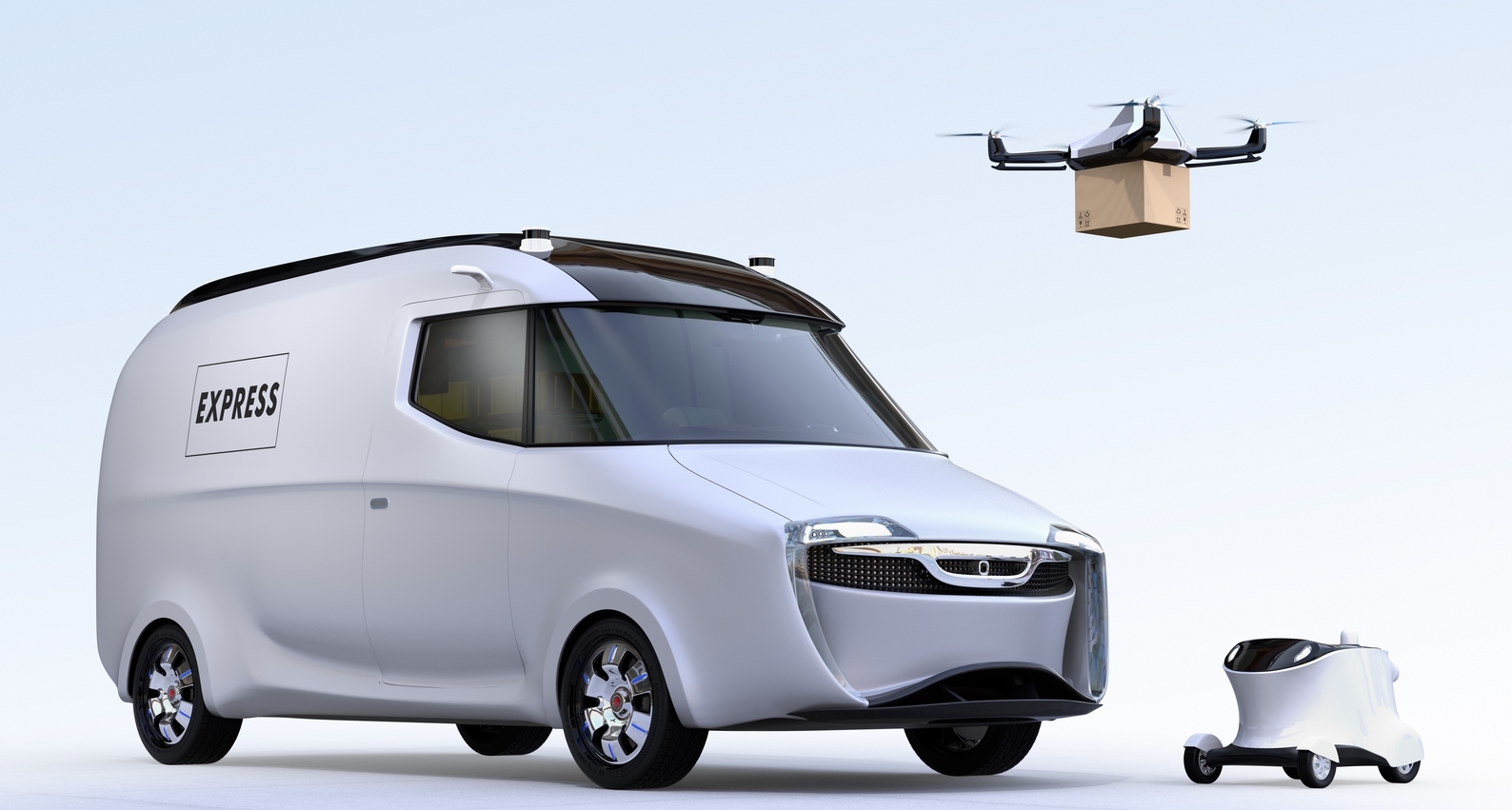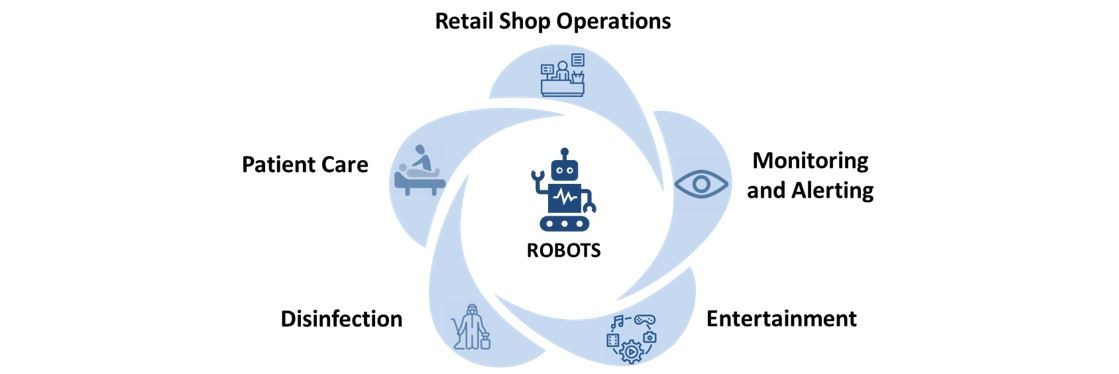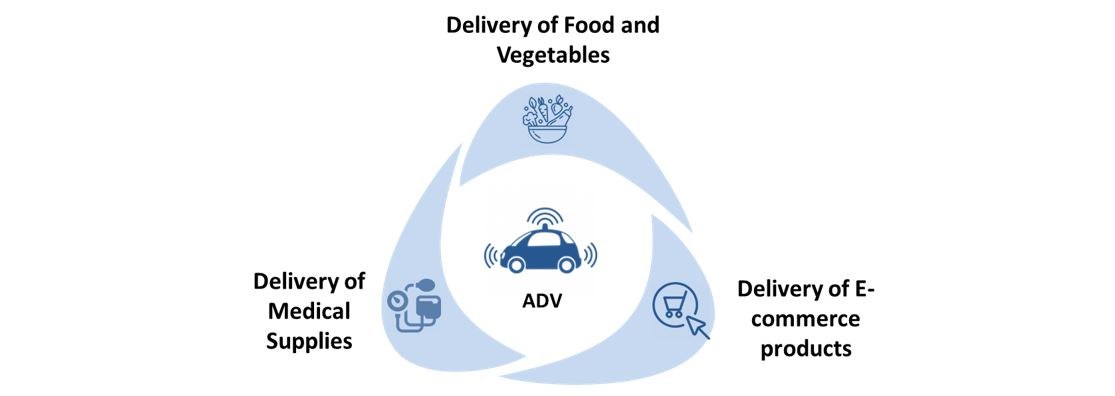Contactless Delivery – Saving Lives Amid the COVID-19 Pandemic
Published on 07 May, 2020

As the COVID-19 pandemic spreads, measures are being taken across the world to practice social distancing and limit human contact. In such a scenario, emerging technologies such as drones, robots, and autonomous vehicles have come to the rescue and are being deployed to perform various functions. Their usage has helped hospital staff, security personnel, and retailers. Will these technologies continue to be deployed even when the crisis is overcome, or are they only being used as a temporary arrangement?
Introduction
With the spread of the highly contagious COVID-19 and imposition of lockdowns to restrict human contact and transport of goods, the way of life that we were used to has been completely disrupted. Delivery of essentials by online service providers has also declined due to manpower challenges and consumers’ fear of infection.
Extraordinary times call for extraordinary measures, and technology is proving to be the strong tool that could help us ride through these difficult times. To tackle logistical issues related to the delivery of necessities such as medicines and food, contactless delivery modes such as drones, robots, and autonomous vehicles are being deployed. Successful adoption of these technologies in countries such as China has consequently helped in limiting human contact and maintaining social distancing. These delivery models are not only providing great relief during these trying times but also laying the foundation for a new era of technological advancement.
This article highlights various delivery technologies, their significance, successful use cases, and their value in the fight against COVID-19.

Drones: Owing to their agility and ability to fit into small spaces and cover large inaccessible areas, drones are frequently used for crowd management, spraying of disinfectants, and payload deliveries. Amazon, the e-commerce giant, had unveiled its plans to launch drone delivery in 2013. However, drone delivery services are yet to be implemented at a commercial level. Chinese companies such as JD.com (a leader in e-commerce), Antwork (a drone delivery startup), MicroMultiCopter (a manufacturer of drones), and SF Express (a large private courier company), have used drones to deliver medical supplies and transport medical samples for analysis during the pandemic.
Emerging countries such as India are also employing drones for various activities to limit the spread of COVID-19. South-India based startup Garuda Aerospace is aiding the state government by supplying drones to disinfect roads and buildings, and thereby reducing infection.
Due to its ability to perform multiple tasks without the requirement of human contact, drones are emerging as one of the most effective tools during the COVID-19 pandemic.

Robots: Robots can be programmed to carry out specialized human tasks. They are currently facilitating social distancing by playing a critical role in hospital care, disinfection, logistics, monitoring and alerting, and other activities.
Recently, China established a hospital where staffed robots aid in treatment of patients and thereby reduce the pressure on the medical staff. The Chinese company CloudMinds donated over 100 robots for hospitals, hotels, and schools. The robots, along with other smart devices, help in monitoring patients remotely and communicating with them effectively. CloudMinds delivered the special edition of “Smart Transportation Robots” that can be programmed to carry food and medicines to patients.
Apart from patient care, robots have been widely deployed to undertake disinfection of hospitals and other public spaces. Hundreds of UV disinfection robots provided by Danish company UVD Robots have been deployed in more than 40 countries. Chinese manufacturer Youibot developed a robot to carry out sterilization in just 14 days to address the rising demand in the market.
Robots are also replacing human workers in retail shops and carrying out repetitive manual activities such as floor cleaning, shelf scanning, and out-of-stock detection. Brain Corp., which supplies autonomous floor-scrubbing robots to grocers and retailers, witnessed a 13% surge in their usage in March 2020 compared with the previous year. Walmart, the country's largest retailer, plans to deploy Brain Corp’s robots along with shelf-scanning robots across 1000+ stores by the end of this year.
During the current lockdowns, robots are assisting and monitoring patients, conveying instructions to people in stores and malls, patrolling, checking temperatures of visitors, as well as serving as source of entertainment.

Autonomous delivery vehicles (ADVS): These vehicles can carry larger supplies than drones and could be the preferred choice over drones in the urban infrastructure. ADVs are playing an important role in contactless delivery of groceries, retail items, medical supplies, and other essentials.
In Jacksonville, Florida, the Mayo Clinic has initiated the use of driverless shuttles for transporting medical supplies and COVID-19 test kits/samples within the hospital grounds. The Mayo Clinic worked with Jacksonville Transportation Authority (JTA), Beep (a software developer), and NAVYA (a manufacturer of vehicles) to create, test, and deploy the ADVs in record time.
Unity Drive Innovation (UDI), an autonomous logistics vehicle developer, delivered autonomous vans to supply fresh fruits and vegetables in eastern China during the coronavirus outbreak.
Neolix, a Beijing-based manufacturer of driverless delivery vehicles, booked orders for more than 200 vehicles in just two months from high-profile customers such as JD.com and Alibaba. These vehicles were used for delivering supplies to the epicenter of the outbreak – Wuhan.
Robopony by Zhen Robotics, which is almost ready to take over home deliveries, demonstrated its capabilities by serving the largest retailers in China.

Conclusion:
Contactless delivery during the ongoing COVID-19 pandemic is enabling social distancing and thereby limiting human exposure to the contagious virus. Drones, robots, and ADVs are crucial in their respective application areas. Drones would be the preferred choice of government agencies owing to its adaptability in different situations and ability to fit into small spaces, cover larger areas, and aid crowd management. Robots can successfully carry out specialized tasks and are likely to be in demand for critical hospital operations such as sterilization and repetitive manual tasks in warehouses and inventory. ADVs will be sought by the retail and e-commerce sectors for last-mile deliveries in urban areas. Successful deployment of these technologies will lead to their increased adoption and large-scale implementation in commercial markets in the near future.
How can Aranca help?
In case your interest has been piqued, Aranca can help you identify the appropriate technologies and opportunities, determine the right collaboration partners, and strategize R&D activities to reap the benefits that the contactless delivery space offers.
